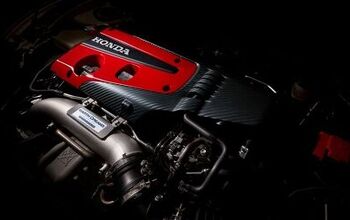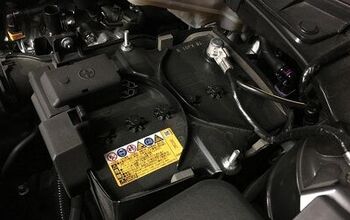Why You Should Never Drive Your Car On Empty

Some drivers see their car’s fuel gauge as a nagging parent; it lights up urging you to refuel like your mom or dad would remind you to clean your room. But don’t ignore your car’s insistence on refueling, because you can damage your car by running it on empty.
We’ve all been in the situation where you’re driving along, possibly singing a song, when suddenly *DING* a low fuel warning light pops up and ruins all your fun because you have to take a pit stop or detour and get gas. You’re either the type of driver who gets really nervous or you’re the complete opposite, relaxed because “empty” is just a guideline or friendly suggestion.
Here’s what you should know, regardless of which type of driver you are.
The warning light indicates that the fuel has reached the reserve level, which is about 10 to 15 percent of your tank’s total capacity. You can use that reference along with your car’s average fuel economy to calculate your remaining range, but it’s a good idea to not risk running the car until it’s dry.
See Also: How Far Can You Drive on Empty?
While standing on the side of the road with your empty car waiting for a tow truck or walking to the nearest gas station and returning with a jerry can is embarrassing enough, there’s another serious concern that could impact your wallet. And it will be way more expensive than a tank of gas.
In your fuel tank, there is a contraption called a fuel pump, which sends the fuel from the tank to the engine. The fuel pump relies on the gasoline in the tank to keep it cool and lubricated. Running the car with a low tank means that the pump isn’t staying as lubricated and cool as it should and is at risk of overheating. The obvious downside to this is premature failure of the pump.
That’s a pretty expensive repair. Failing fuel pumps will lead to poor performance, particularly with a car not accelerating smoothly or failing to start. Ignoring your car’s low fuel warning is generally a bad idea, and running your car on empty can cause serious and costly problems to your car’s fuel system.
Keep that in mind the next time your car nags you to visit the gas station.
Become an AutoGuide insider. Get the latest from the automotive world first by subscribing to our newsletter here.

Sami has an unquenchable thirst for car knowledge and has been at AutoGuide for the past six years. He has a degree in journalism and media studies from the University of Guelph-Humber in Toronto and has won multiple journalism awards from the Automotive Journalist Association of Canada. Sami is also on the jury for the World Car Awards.
More by Sami Haj-Assaad


































Comments
Join the conversation
Not so much over heat or lub. The real issue is with it running warm you dump cold in the ground fuel on the pump and they will cease up. They are sensitive to temps and the shock will often finish one off.
Alot of newer cars have 2 fuel pumps because of the shape on the gas tank. The secondary fuel pump, pumps that tank to the primary tank so the primary pump sends fuel to the engine. So what happens to the secondary pump when it's empty of fuel?